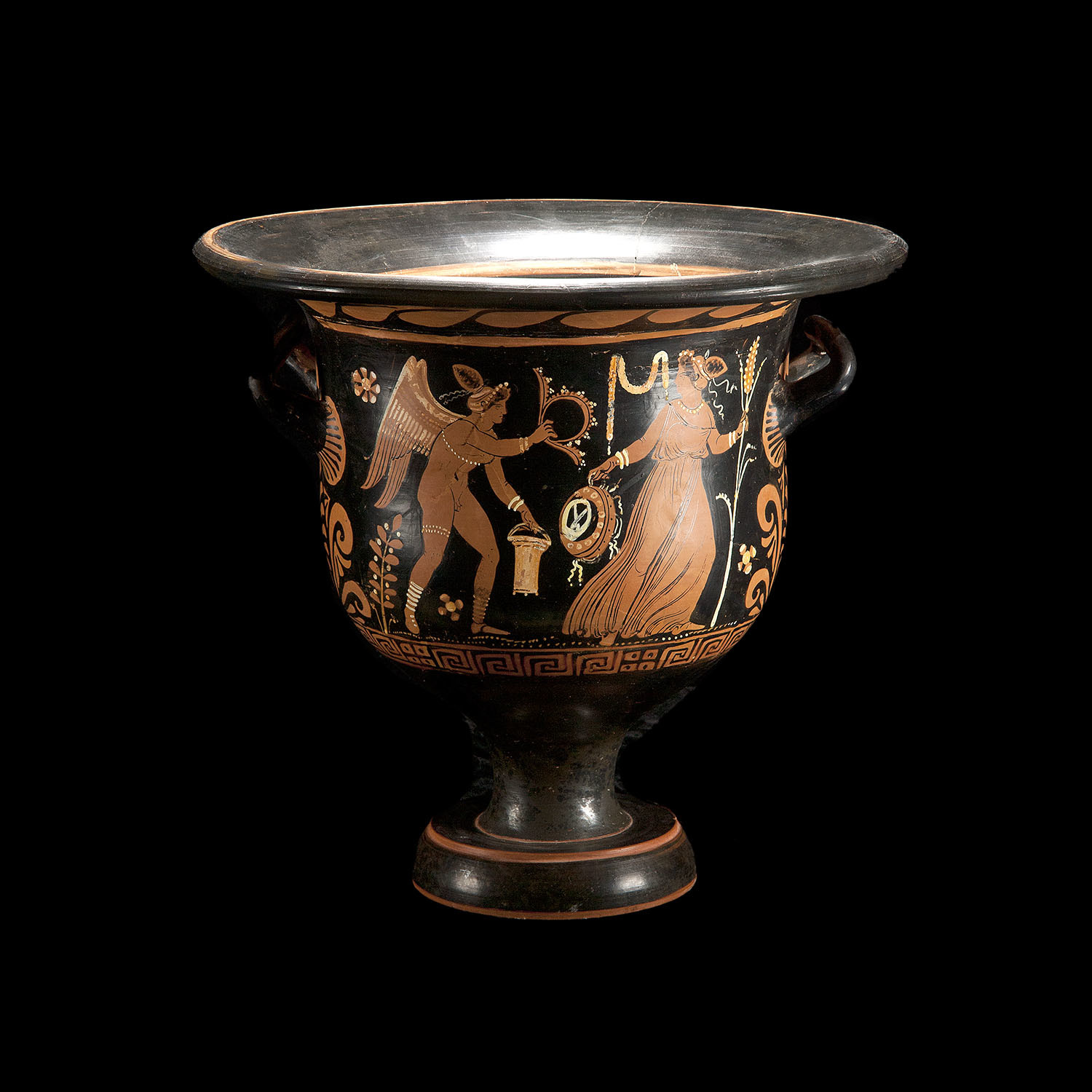- Thread starter
- #81
The Temple in First-Century Judaism and Christianity
The Roman general Pompey conquered Jerusalem in 63 BC, and Judea became a vassal state to Rome. Herod the Great ruled as a loyal subject to Rome, and yet the splendid temple he erected generally enjoyed a fiercely defended autonomy broken only by incidents where Roman rulers demanded the erection of images of themselves or their pagan gods requiring the Jews to worship them.[24] As a symbol of this balance of power under Roman rule, a daily sacrifice was offered for the welfare of the Roman emperor at the temple consisting of two lambs and an ox. The sacrifice was initiated and financed by Augustus but was defiantly abandoned at the beginning of the Jewish revolt in AD 66 (Philo, The Embassy to Gaius 157, 317–19).
The major sects of Judaism and early Christianity had their own distinctive relationships to the institution of the temple and its priesthood and rituals. The Sadducees were the aristocratic priestly families who controlled and administrated many aspects of the temple. When the temple was destroyed, the Sadducees lost the foundation of their livelihood and their base of power among the people. While priestly traditions survived for a time in the synagogue traditions, eventually the Sadducees without a temple were eclipsed by the Pharisees.
The Pharisees did not oppose participation in the temple in spite of their opposition to the control of the Sadducees. The Pharisees, however, owed their allegiance to oral law and thus found their relationship with the temple more flexible. Through oral law they would be able to forge religious practices that could survive without the temple. A Jewish legend records how Rabbi Johanan ben Zakkai, who found himself trapped in Jerusalem during the Roman siege, realized the temple was going to be destroyed. He had himself hidden in a coffin in order to leave the city. He was taken before the military commander Vespasian, who eventually became a Roman emperor. The rabbi asked Vespasian to give him Yavneh, a city where he founded a rabbinical academy that preserved the Sanhedrin and the ongoing process of oral tradition that would result in the publication of the Mishnah (Babylonian Talmud, Gittin 56).
Eventually the sect of the Pharisees transitioned into rabbinic Judaism, which became mainstream Judaism to the present day. With time Pharisaic Judaism was able to promote institutions that continued worship in the absence of the sacrificial system of the temple. A well-known story in the Midrash tells of Rabbi ben Zakkai, who, when walking by the ruins of the temple, said to his disciple, “My son, do not be grieved, for we have another atonement that is just like it. And which is it? Acts of loving-kindness, as it is said, ‘For I desire loving-kindness, and not sacrifice’ [Hosea 6:6]” (Avot de-Rabbi Natan 4.21).[25] With time other rabbis noted that prayer, study, and acts of loving-kindness are pleasing to the Lord like sacrifice.[26]
The Samaritans claimed to be remnants of the northern ten tribes. They preserved an ancient tradition in their version of the Torah called the Samaritan Pentateuch that commanded the temple be built on Mount Gerizim. According to Josephus the Samaritans built their temple there sometime in the period of Alexander the Great (Antiquities 11.310–11), and it remained a center of their religious community and a competing temple to the Jerusalem temple until the Samaritan temple was destroyed by the Hasmonean king John Hyrcanus in 129 BC (Antiquities 13.254–56).[27] The age-old conflict between the Jews and Samaritans was exacerbated by the Jewish refusal to allow the Samaritans to help with the rebuilding of Zerubbael’s temple in ca. 515 BC. The destruction of the Samaritan temple in 129 BC was another one of the defining incidents leading to the division and continued animosity between the Jews and Samaritans as reflected in the New Testament. This dispute over the temple provides the background of the conversation Jesus had with the Samaritan woman in John 4. To this day Samaritans continue to live near Mount Gerizim and offer the yearly Passover sacrifice in the vicinity of their temple site.
Most scholars believe that the Qumran community reflected in the Dead Sea Scrolls were the Essenes (see chapter 7). According to ancient historians, as well as some of the documents from Qumran, the Essenes believed that the Jerusalem priesthood that administrated the temple was corrupt and that the sacrificial system and the calendar were also corrupt. Thus, while the Essenes passionately believed in the temple, they did not participate in its rituals in Jerusalem. Some scholars argue that they saw themselves as a community representing the temple.[28] While they may have rejected the Jerusalem temple in their time, they had a strong belief in and love for the institution of the temple. One of the significant finds in the Dead Sea Scrolls is the Temple Scroll, believed by the Qumran sect to be scripture that describes the plans and the legal requirements for a future eschatological temple.[29]
Christians initially continued worshipping at the Jerusalem temple and living the law of Moses, but eventually it became clear, following the Council of Jerusalem, that one did not have to become a Jew to become a Christian (Acts 15; compare Galatians 2); therefore most Christians began to distance themselves from the temple. Following the destruction of the temple in AD 70, Christianity generally adopted the point of view that the church was a temple. Based on passages of scripture in the writings of Paul like “Know ye not that ye are the temple of God, and that the Spirit of God dwelleth in you” (1 Corinthians 3:16), and “For we know that if our earthly house of this tabernacle were dissolved, we have a building of God, an house not made with hands, eternal in the heavens” (2 Corinthians 5:1). Christians came to view the individual believer and the church as a community of believers functioning as the new temple of God.[30]
The Roman general Pompey conquered Jerusalem in 63 BC, and Judea became a vassal state to Rome. Herod the Great ruled as a loyal subject to Rome, and yet the splendid temple he erected generally enjoyed a fiercely defended autonomy broken only by incidents where Roman rulers demanded the erection of images of themselves or their pagan gods requiring the Jews to worship them.[24] As a symbol of this balance of power under Roman rule, a daily sacrifice was offered for the welfare of the Roman emperor at the temple consisting of two lambs and an ox. The sacrifice was initiated and financed by Augustus but was defiantly abandoned at the beginning of the Jewish revolt in AD 66 (Philo, The Embassy to Gaius 157, 317–19).
The major sects of Judaism and early Christianity had their own distinctive relationships to the institution of the temple and its priesthood and rituals. The Sadducees were the aristocratic priestly families who controlled and administrated many aspects of the temple. When the temple was destroyed, the Sadducees lost the foundation of their livelihood and their base of power among the people. While priestly traditions survived for a time in the synagogue traditions, eventually the Sadducees without a temple were eclipsed by the Pharisees.
The Pharisees did not oppose participation in the temple in spite of their opposition to the control of the Sadducees. The Pharisees, however, owed their allegiance to oral law and thus found their relationship with the temple more flexible. Through oral law they would be able to forge religious practices that could survive without the temple. A Jewish legend records how Rabbi Johanan ben Zakkai, who found himself trapped in Jerusalem during the Roman siege, realized the temple was going to be destroyed. He had himself hidden in a coffin in order to leave the city. He was taken before the military commander Vespasian, who eventually became a Roman emperor. The rabbi asked Vespasian to give him Yavneh, a city where he founded a rabbinical academy that preserved the Sanhedrin and the ongoing process of oral tradition that would result in the publication of the Mishnah (Babylonian Talmud, Gittin 56).
Eventually the sect of the Pharisees transitioned into rabbinic Judaism, which became mainstream Judaism to the present day. With time Pharisaic Judaism was able to promote institutions that continued worship in the absence of the sacrificial system of the temple. A well-known story in the Midrash tells of Rabbi ben Zakkai, who, when walking by the ruins of the temple, said to his disciple, “My son, do not be grieved, for we have another atonement that is just like it. And which is it? Acts of loving-kindness, as it is said, ‘For I desire loving-kindness, and not sacrifice’ [Hosea 6:6]” (Avot de-Rabbi Natan 4.21).[25] With time other rabbis noted that prayer, study, and acts of loving-kindness are pleasing to the Lord like sacrifice.[26]
The Samaritans claimed to be remnants of the northern ten tribes. They preserved an ancient tradition in their version of the Torah called the Samaritan Pentateuch that commanded the temple be built on Mount Gerizim. According to Josephus the Samaritans built their temple there sometime in the period of Alexander the Great (Antiquities 11.310–11), and it remained a center of their religious community and a competing temple to the Jerusalem temple until the Samaritan temple was destroyed by the Hasmonean king John Hyrcanus in 129 BC (Antiquities 13.254–56).[27] The age-old conflict between the Jews and Samaritans was exacerbated by the Jewish refusal to allow the Samaritans to help with the rebuilding of Zerubbael’s temple in ca. 515 BC. The destruction of the Samaritan temple in 129 BC was another one of the defining incidents leading to the division and continued animosity between the Jews and Samaritans as reflected in the New Testament. This dispute over the temple provides the background of the conversation Jesus had with the Samaritan woman in John 4. To this day Samaritans continue to live near Mount Gerizim and offer the yearly Passover sacrifice in the vicinity of their temple site.
Most scholars believe that the Qumran community reflected in the Dead Sea Scrolls were the Essenes (see chapter 7). According to ancient historians, as well as some of the documents from Qumran, the Essenes believed that the Jerusalem priesthood that administrated the temple was corrupt and that the sacrificial system and the calendar were also corrupt. Thus, while the Essenes passionately believed in the temple, they did not participate in its rituals in Jerusalem. Some scholars argue that they saw themselves as a community representing the temple.[28] While they may have rejected the Jerusalem temple in their time, they had a strong belief in and love for the institution of the temple. One of the significant finds in the Dead Sea Scrolls is the Temple Scroll, believed by the Qumran sect to be scripture that describes the plans and the legal requirements for a future eschatological temple.[29]
Christians initially continued worshipping at the Jerusalem temple and living the law of Moses, but eventually it became clear, following the Council of Jerusalem, that one did not have to become a Jew to become a Christian (Acts 15; compare Galatians 2); therefore most Christians began to distance themselves from the temple. Following the destruction of the temple in AD 70, Christianity generally adopted the point of view that the church was a temple. Based on passages of scripture in the writings of Paul like “Know ye not that ye are the temple of God, and that the Spirit of God dwelleth in you” (1 Corinthians 3:16), and “For we know that if our earthly house of this tabernacle were dissolved, we have a building of God, an house not made with hands, eternal in the heavens” (2 Corinthians 5:1). Christians came to view the individual believer and the church as a community of believers functioning as the new temple of God.[30]




